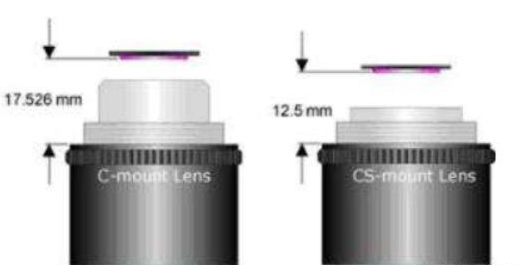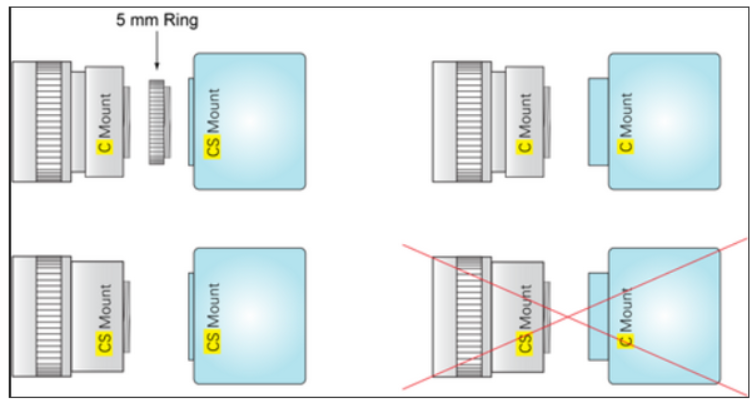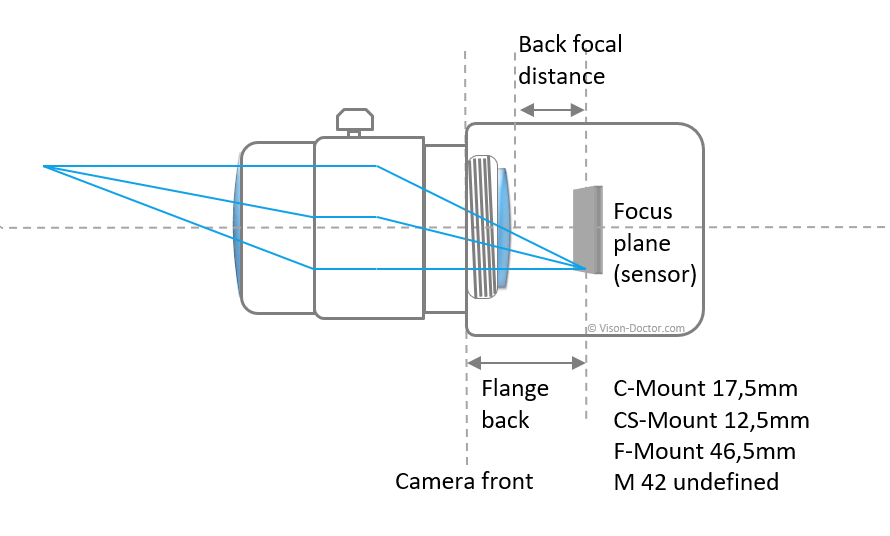The difference between the C and CS interfaces is the distance from the contact surface between the lens and the camera to the focal plane of the lens (the position where the CCD photoelectric sensor of the camera should be located). The distance of the C-type interface is 17.526, and the distance of the CS-type interface is 12.5mm.

C-type lens and C-type camera, CS-type lens and CS-type camera can be used together. A 5mm adapter ring can be added between the C-type lens and the CS-type camera, and the CS-type lens cannot be used with the C-type camera.

Back focus
In an optical system, the distance from the vertex of the last optical lens surface to the image plane is called the back focal length (BFL: Back Focal Length). For different optical systems, the back focal length is different. Therefore, when installing the lens, it is necessary to adjust the relative position of the lens to the camera so that the distance from the camera film to the vertex of the last surface of the lens meets the requirements of the back intercept, even if the film is located on the image plane of the lens.

Flange back focal length (Flange BFL),It refers to the distance between the lens mount plane on the body and the exposure window plane of the body, that is, the distance between the lens mount flange (Flange) and the photosensitive element (sensor), as shown in the figure below, the value is 17.526mm;
Optical Back Focus,Refers to the distance from the last lens surface of the lens to the photosensitive surface of the sensor when the light leaves the lens, as shown in the figure below, the value is 14.9mm;
Mechanical Back Focus,Refers to the distance from the upper edge of the lens barrel to the photosensitive surface of the sensor, as shown in the figure below, the value is 10.9mm.
The optical back focus is generally longer than the mechanical back focus, otherwise the lens will protrude from the lens barrel, which is prone to scratches and pollution.

Flange Focus Distance is also called FFD, Flange Focus Distance.


